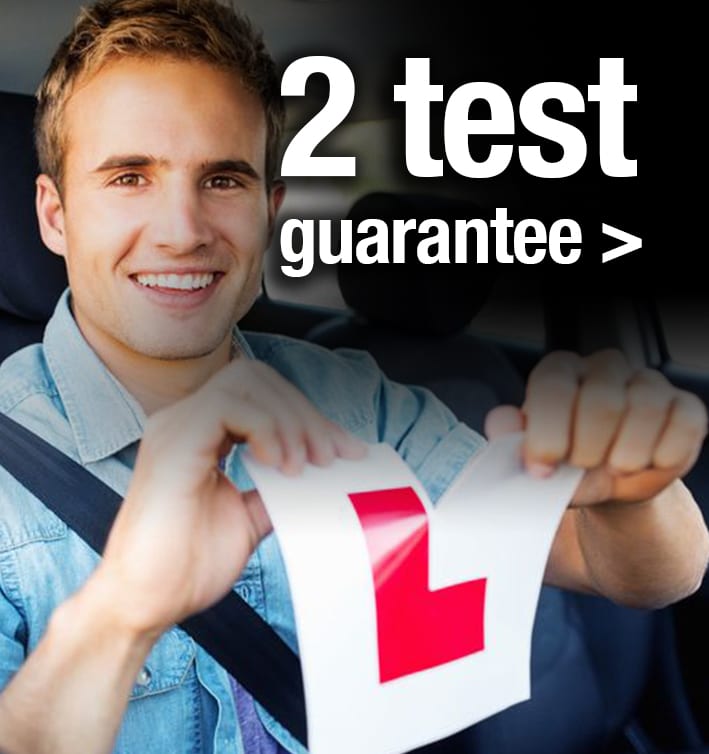A Handy Q&A Guide to the Changes in the New Practical Driving Test (4/12/2017)
Q. Is it going to be harder to pass?
A. No. There are no changes to the pass rates between the 2 tests; about 60% of people generally pass first time, 25% second time and 15% third time. This is in line with the existing driving test pass rates.
Q. Why has it been introduced then?
A. It is known that the contents of the driving test have an influence on the training people undertake to prepare for it and the DVSA have recognised that the current test is practically difficult to include some of the faster moving roads and rural roads. The changes enable the test routes to include these types of roads.
Q. Ok, will it make any difference to how quickly I can pass?
A. When the revised test was researched* they used learners who had not had any previous attempts at the test and discovered that it takes about 40 hours of training with a driving instructor over 7 months and an additional 19 hours with a supervisor driver (friend or family) doing private practise. These figures are very similar to the existing driving test stats. When they compared these with the national comparison figures which did not only include first timers, they were at a slightly higher average of about 48 hours with a driving instructor. So you can reasonably deduce from this that it takes on average between 40 – 50 hours with a driving instructor and a further 15-20 hours private practise.
Q. Does that have any impact on your intensive driving courses?
A. Not in the slightest. We have always made it very clear to anyone who contacts us that we happily work with customers from a range of starting points from absolutely no previous experience to those who have had several unsuccessful attempts at the test but just cannot pass it.
Q. Was there any difference discovered in how well people drove after passing the test?
A. They did keep in touch with them up to 6 months after passing. In terms of accident rates, it was unchanged between the 2 driving tests at about 1 in 11.
Q. I always thought that the accident rate for new drivers was 1 in 5 within 6 months of passing?
A. That figure is from a study in the 2000’s and recognised as being out of date. The accident rate of about 10% within 6 months of passing the test is consistent between the old and new driving test.
Q. What has changed since then?
A. The analysis of collision or accident risk is quite interesting. There are some things that will increase the risk of having a collision such as driving in busy town areas, driving for business purposes, driving with a telematics based insurance policy. And there are other things that reduce risk of having a collision such as access to a vehicle owned by parents/relatives/friends post-test, time spent on rural roads and driving independently when training with a driving instructor.
Q. Why does driving with a telematics based insurance policy increase the risk? Do you mean the ‘black box’?
A. Yes and that is a good question and well worth asking as it is in the order of 50% increased risk according to the research which cannot offer any further light on the subject.
Q. Are there any other surprise findings like that?
A. The data showed that being younger at test pass and driving more (post-test) increased crash risk – I think that would come as no surprise to many. But the pass rates are similar, even the number of driving faults recorded between the 2 different driving tests is very similar at around 5 on average. The reason for the manoeuvre changes is simply to provide the examiners with more flexibility within the test so that they can accommodate routes that involve the faster moving roads and rural roads. These types of roads have always featured large on the BIG TOM intensive driving course quite simply because there is more time in the session to go further afield – it really is that simple.
Q. Does this have any effect on driving instructors?
A. Well I certainly hope it does! The DVSA have been making it clear for a long time in their Driving Standards that they expect driving instructors to train their pupils on a variety of different type or class of roads to build up their experience. As the driving tests previously have tended to be contained within town/residential areas (to enable the manoeuvre to be done), this has affected how much time some instructors have allowed their pupils to gain experience on faster moving roads and country roads.
Q. Do you think the new driving test is a positive change?
A. The impact it will have on BIG TOM customers is minimal because we have always given our pupils the opportunity to drive between towns and cities picking up vital driving experience, using sat nav, negotiating rural road bends etc. My advice still remains the same that I say to all my pupils: forget about the driving test and just concentrate on building up enough driving experience of differing driving conditions so that you are feeling confident and competent to drive completely independently in rain, sun, daylight or dark, busy or quiet roads. If a pupil gets distracted just thinking about going to test it tends to prevent them from accurately assessing their driving skills and strengths/weaknesses.
Q. Ok so if I’m a new learner what would be your advice given the above information?
A. I always advise that the best results come when a learner takes on the responsibility of learning in an effective way for them – this is a personal learning experience. So, my advice is to reflect on how you like to learn, the timescales involved, and quite literally what different training providers are offering in terms of resources. You really do need to recognise that as in all walks of life, not all driving instructors are the same, and if you can identify HOW you like to learn, then you can then go about finding a provider who will be able to accommodate your needs. This bit of advice will potentially save you time, money and misery.





